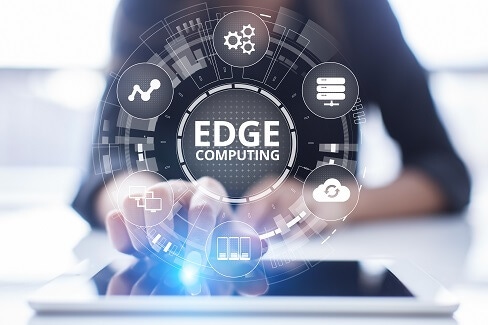Deloitte on Cloud, the Edge, and Enterprise Expectations
As technology matures to be cheaper, faster, and more powerful, it creates new possibilities with micro data centers and AI chips at the edge.

Consulting and professional services firm Deloitte recently issued a report, “Unbundling the cloud with the intelligent edge,” which looks at how updated connectivity in the cloud, AI, and edge computing can be exploited by the enterprise. Elements making up this changing ecosystem include the adoption of 5G and Wi-Fi 6 in the next phase of wireless connections, says Jeff Loucks, executive director of Deloitte’s Center for Technology, Media, & Telecommunications. He says the report posits the displacement of incumbent wireless by 5G in the next three years. New tiers of wireless may act as force multipliers, according to the report, by expanding the potential of other new technologies.
“The way we’re thinking about the intelligent edge,” says Loucks, “it’s a combination of processing power, artificial intelligence, and advanced connectivity that’s located near devices that generate and consume data.” Those devices include smartphones, robots, drones, and sensors. The alignment of such resources could turbocharge industry and the internet of things, he says.
Part of what drives the evolution at the edge is the processing power coming from datacenters that are nearby connected devices as well as on devices themselves. Another factor is minimized latency through improved connectivity that can speed up data analysis, Loucks says. “In the past, IoT has sometimes gotten stuck because the data has been collected and stored but not analyzed or acted upon.”
The introduction of more advanced wireless connectivity, he says, is essential for devices at the edge to realize their potential. Incumbent 4G LTE wireless services continues to be used, but Loucks expects more 5G and Wi-Fi 6 to surface in the next one to two years.
That connectivity still needs to be paired with AI and machine learning to analyze data from edge devices in real time and enable automation, he says. There is an escalation of inference at the edge, Loucks says, with AI in small datacenters and edge AI chips offering faster execution processing.
Devices at the edge are typically within 30 miles of a data center, he says, and on private networks may see latency under 10 milliseconds. That fast caliber of processing is needed to support robotics and autonomous cars, compared with public cloud, which tends to see 50 milliseconds in latency, Loucks says.
Businesses can find value at the edge, he says, through faster response times, more efficient use of bandwidth, more automation, and greater control over data such as where it resides. For example, robots that roam grocery store aisles to track inventory cannot wait on a server to process and transmit navigational data, lest they run into shoppers. Behind such robots is a complex ecosystem of sensors, cameras, connectivity, and edge intelligence that Loucks says may need some sorting out and orchestration. “No one vendor has got all of those pieces.”
The last time connectivity standards evolved, leading to 4G LTE, Loucks says it buttressed mobile video, streaming on demand, and live streaming. Something comparable could be seen with 5G. “You’re going to have adjacencies that are unexpected impacts when you have a new technology,” he says.
The edge is still dependent on broader implementation of 5G and Wi-Fi 6 networks, Loucks says, along with continued evolution of semiconductors. “There are now tiny AI chips that have very high processing speed and low power requirements, and some of them cost under $4.” For all the opportunities that seem possible at the edge, there may also be a need to simplify the ecosystem for enterprises to get the most out of it. “The biggest challenge right now is going to be orchestrating all of these different pieces and bringing them into solutions that are going to scale for companies,” Loucks says. “Some companies are just trying to figure out right now what is going to be the easiest path to ROI.”
For more content on edge computing, follow up with these stories:
Google, Harvard, and EdX Team Up to Offer TinyML Training
How to Integrate Edge Computing With Your Core Systems
Exploring Edge Computing as a Complement to the Cloud
About the Author(s)
You May Also Like
How to Amplify DevOps with DevSecOps
May 22, 2024Generative AI: Use Cases and Risks in 2024
May 29, 2024Smart Service Management
June 4, 2024







